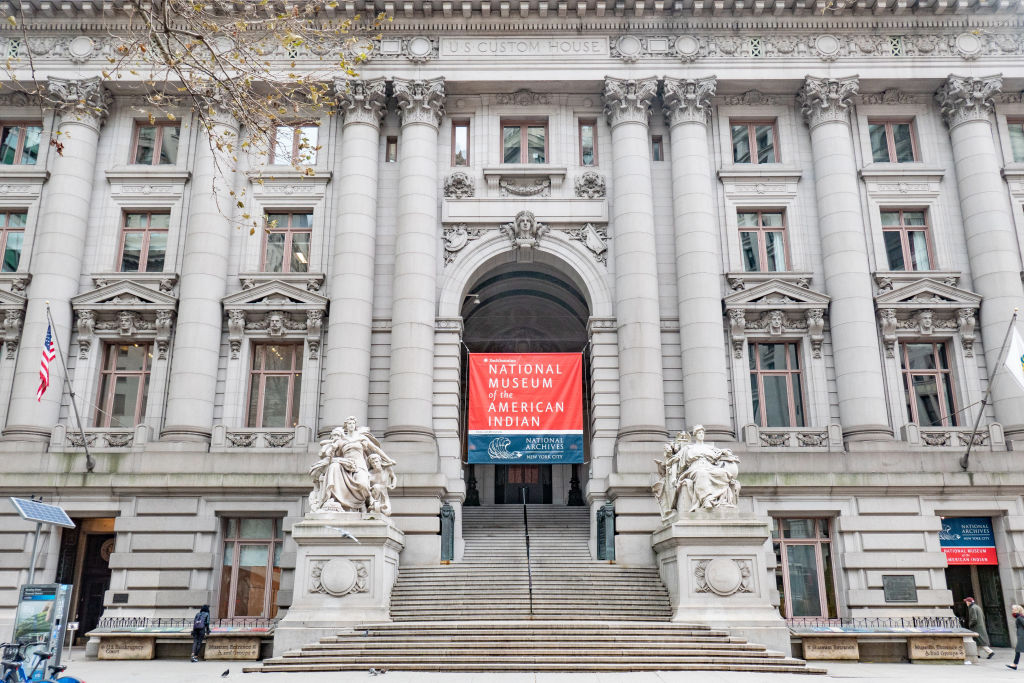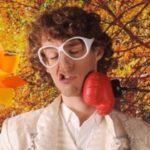
During the summer, millions of families worldwide brave the Washington, D.C., heat to visit Smithsonian museums. But they’re not the only ones there during their summer break. Many teachers also visit, not for a vacation, but to enhance their skills, enrich their classroom resources, learn from museum educators and expand their professional network by connecting with other educators from across the country. These teachers are dedicated to continuous improvement, even during their time off.
We firmly believe that in order for the Smithsonian to reach every classroom across the nation, dedicated educators require and deserve all the support we can provide. Below, you’ll discover several of the Smithsonian’s free annual summer teacher professional learning programs and how to participate in next year’s offerings. We also offer a full list of Smithsonian professional development opportunities, workshops, lectures, and events.
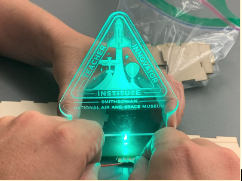
Teacher Innovator Institute | National Air and Space Museum
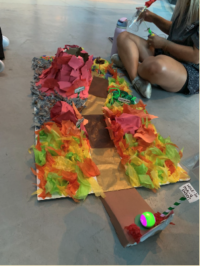
In this program, education professionals collaborate closely with museum education and STEAM experts to delve into the intersections between informal STEAM education and authentic learning experiences. Participants formulate and refine their personal professional development objectives, acquire the necessary skills to seamlessly integrate museum-based learning into their instructional approaches, and establish connections with fellow educators hailing from diverse regions across the nation.
Teachers remain in the program for two summers, returning to Washington, D.C., in the second year to reconnect, further develop their practices and mentor the newest class of Teacher Innovators. The program is led by NASM program coordinator Shannon Baldioli, whose museum professional exterior belies the scientist within. This year, participants shared cappuccinos beneath the wings of the Space Shuttle Discovery in the Udvar-Hazy Space Hangar, programmed pocket-size robots to whizz around on mini golf courses they constructed, and engaged in meaningful, often humorous, conversations about innovative practices, tools they swear by and very relatable classroom experiences.
“As we all know what it means to be a teacher in today’s world, I want to show all the gratitude and appreciation to a person who stands up for teachers, fights to give them the professional growth opportunities they deserve, and shows each of us that we are here because the skills and abilities we bring, no matter what stage of our career we are in, are valuable to this community and this profession. Thank you, Shannon, for dreaming up this incredible program, working hard to make it a reality, and continuing the hard work of showing a diverse group of educators from around the United States that they are worthy of all the support and honor this profession deserves.” — Kelsey Vollmer, K-5 science lab teacher, Seattle
Looking ahead to the 2024 summer, the Teacher Innovator Institute will once again welcome up to 30 teachers from across the US to participate. There is no cost for teachers to participate, and most expenses are paid by the museum.
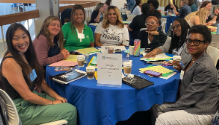
Zero Barriers in STEM Education: Accessibility and Inclusion Summit | Smithsonian Science Education Center
This annual summit aims to enhance accessibility and inclusion across STEM education and school culture for students with disabilities.
This year’s summit was hosted at Gallaudet University in Washington, D.C., and was facilitated by SSEC’s Sherrell Williams. Participants collaborated to contextualize a problem of practice in accessible and inclusive STEM teaching, programming and culture in their education system. Their next step was to create a logic model to address the identified problem of practice with the support of a mentor. Following the summit, selected teams and mentors are engaging in virtual professional development a few months into implementing their logic models, focusing on gaining perspective from students and caregivers and expanding on any progress they’ve made toward broadening STEM opportunities for students with disabilities.
As I reflect on my experience at the #ZeroBarriersSummit2023, I can’t help but feel proud and inspired … The SSEC is an outlier organization, in my opinion, in that their focus is concerned with interrupting norms which suggest that access to STEM education and programming is not a guarantee for all learners. I am excited to continue this collaborative endeavor, and feel hopeful that our efforts will greatly impact the outcomes for our students in the present, and when they eventually enter the world of work. — Joseph Calcagno, New York City Department of Education
Check out the 2024 opportunities. The summit and all associated activities are provided at no cost to attendees. Travel and accommodations are also provided to attendees that reside outside of a 50-mile radius of the event venue.
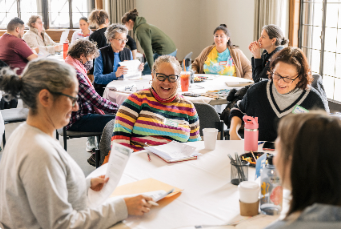
Native Knowledge 360° Professional Development Programs | National Museum of the American Indian
These live and interactive programs introduce educators to the NK360° platform and its extensive resources. Both webinars and on-site programs are tailored to equip education professionals with strategies for integrating more comprehensive narratives of Native American histories, cultures and contemporary lives into their teaching methods.
During this summer’s webinars, teachers delved into the detrimental effects of commonly used imagery and language about Native peoples on students’ understanding of Native histories and cultures. In engaging discussions guided by NMAI program manager Jennifer Shannon, educators interacted with acclaimed contemporary Native American graphic artists Michael Sheyahshe (Caddo) and Lee Francis IV, Ph.D., (Laguna Pueblo). The artists shared their approaches to utilizing graphic novels to challenge preconceived notions about Indigenous people. The impactful works of Sheyahshe and Francis are showcased in both the museum’s permanent exhibition, ”Native New York,” and NK360° online classroom lessons. Throughout the webinars, teachers explored strategies for integrating these artists’ imagery, graphic novels and comic art into their classrooms.
“I’m looking forward to using these resources in my classroom as Indigenous cultures are so infrequently mentioned in curricula, and always in the past. I shift that balance to include more present-day voices.” — Jennifer Hoffmann, second-grade educator, Virginia
NMAI offers NK360° professional development opportunities throughout the year. Explore a range of upcoming webinars and program options.
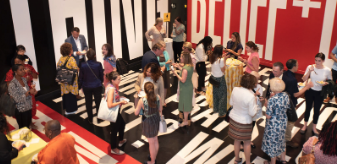
Smithsonian National Education Summit | Office of the Under Secretary of Education
From July 18 to 20, the Smithsonian Office of the Under Secretary for Education held its annual National Education Summit with the theme “Together We Thrive: Fostering a Sense of Belonging,” recognizing that all children can excel given the right conditions and resources. PreK-12 educators, librarians, media specialists and policymakers across the US engaged in sessions exploring four distinct track themes:
- Life on a Sustainable Planet
- Reckoning with Our Racial Past
- STEAM Education
- Integrated Arts Education
Over 4,500 registrants from all US states and across six continents tuned in online or participated in-person at the Hirshhorn Museum and Sculpture Garden and Arts and Industries Building. Throughout the sessions, professionals from more than 20 Smithsonian museums and research centers shared insights, with attendees praising the inspiring keynotes, student and teacher voices, and practical teaching applications for the upcoming year. Archived sessions can be accessed on the Summit archive page or on the Smithsonian Education YouTube page. Past years’ sessions are also available for replay: 2022, 2021.
Looking to join next year’s Summit? Save the date: July 16-18, 2024!
These are just a sampling of education programs we offer. To stay tuned to the latest in Smithsonian Education, follow us on social media or subscribe to our monthly e-newsletter. Every month, we showcase high quality education resources, engaging events, and one-of-a-kind professional learning opportunities spanning the Smithsonian, emphasizing interdisciplinary content, concepts, and skills for grades PK–12+. Our goal is to ignite curiosity and foster connections in a dynamic world, so feel free to reach out for inquiries or assistance in integrating Smithsonian Education resources.
Cody Coltharp is an interactive designer in the Office of the Under Secretary for Education for the Smithsonian Institution and works with museum scientists, researchers and educators. Coltharp develops games, graphics and simulations using Smithsonian digital resources to make the research, data and stories more accessible and engaging.
Opinions expressed by SmartBrief contributors are their own.
_________________________
Subscribe to SmartBrief’s FREE email ASCD newsletter to see the latest hot topics in education. It’s among SmartBrief’s more than 250 industry-focused newsletters.
